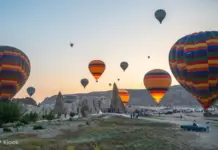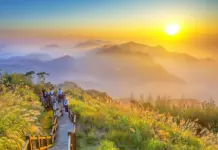
Antelope Canyon in the far west of the United States was discovered by the Navajo Indians during their constant wanderings in the 18th-19th centuries. Today, the unique magical scenery and Aboriginal Indians stories have turned this place into a crowded tourist attraction. On the 13-day Grand Circle road trip across the American Southwest, I had an opportunity to visit one of the most famous, breathtaking, astonishing, overwhelming American canyons called Antelope Canyon including Upper Antelope and Lower Antelope. In this article I will share with you my experiences I got on how to visit Antelope Canyon, which one is better upper or lower Antelope (upper Antelope vs lower Antelope) through my Antelope Canyon travel blog (Antelope Canyon blog) with the Antelope Canyon guide (Antelope Canyon travel guide) as well as some Antelope Canyon photography tips and best camera settings for Antelope Canyon!
- The ULTIMATE Yellowstone National Park Travel Guide: Top Things to Do, See, Stay, Tips & MORE
- 15+ Best & Most Beautiful National Parks in the US You Shouldn’t Miss
- Bryce Canyon itinerary — How to visit Bryce Canyon in one day?
- Grand Circle USA blog — The guide & suggested perfect Grand Circle road trip itinerary for 3 weeks
- New York best museums: 15 most famous & must visit museums in New York
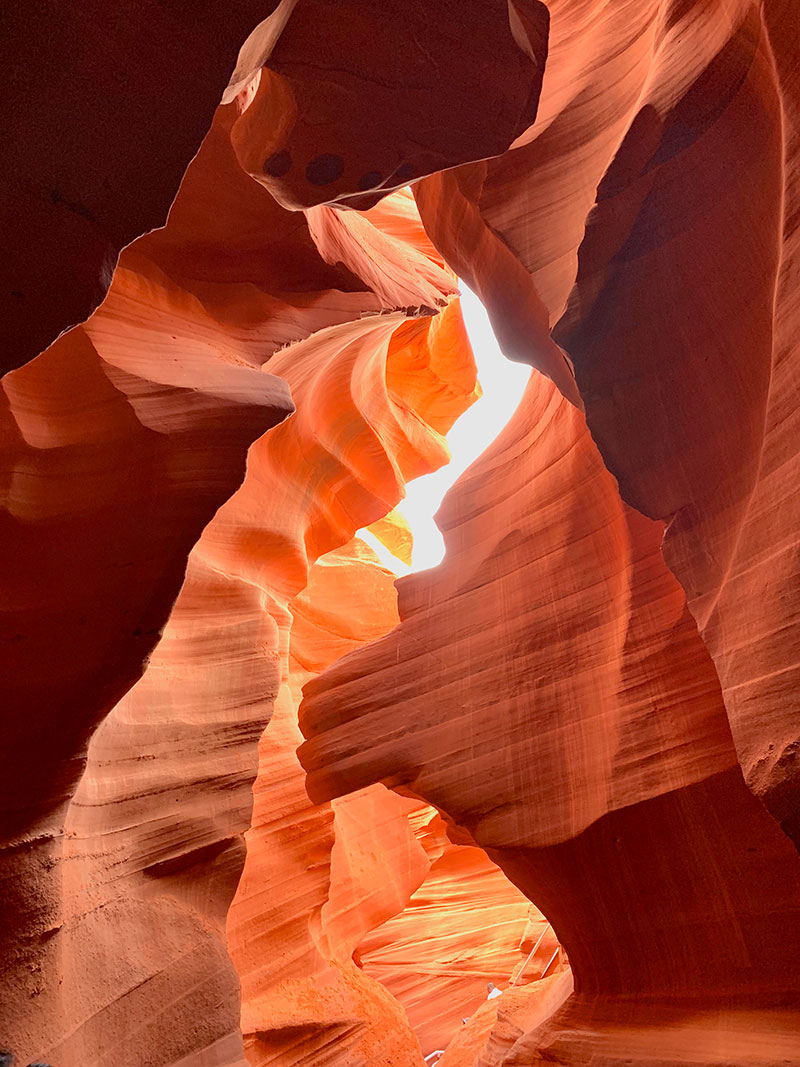
Page – The crossroads between national parks
After leaving Monument Valley, the classic setting of the Far Western cowboy movies, I stopped in Page, a small town in the middle of the desert in northern Arizona, bordering the state of Utah. Page has only nearly 8,000 inhabitants, was established in the middle of the last century to serve the construction of the Glen Canyon hydroelectric dam. Today, it is home to the hydropower plant’s employees and welcomes nearly 3 million tourists to the surrounding area each year.
If not mention the strange Lake Powell Boulevard street with 12 churches of 12 faiths, standing side by side in a row, none of which are alike, which residents often call “Church Row”, Page is not is a special city. However, anyone traveling along the Grand Circle must also visit Page because this is the intersection of the routes connecting Zion NP, Bryce Canyon, Arches Canyon, Monument Valley, Grand Canyon NP,…
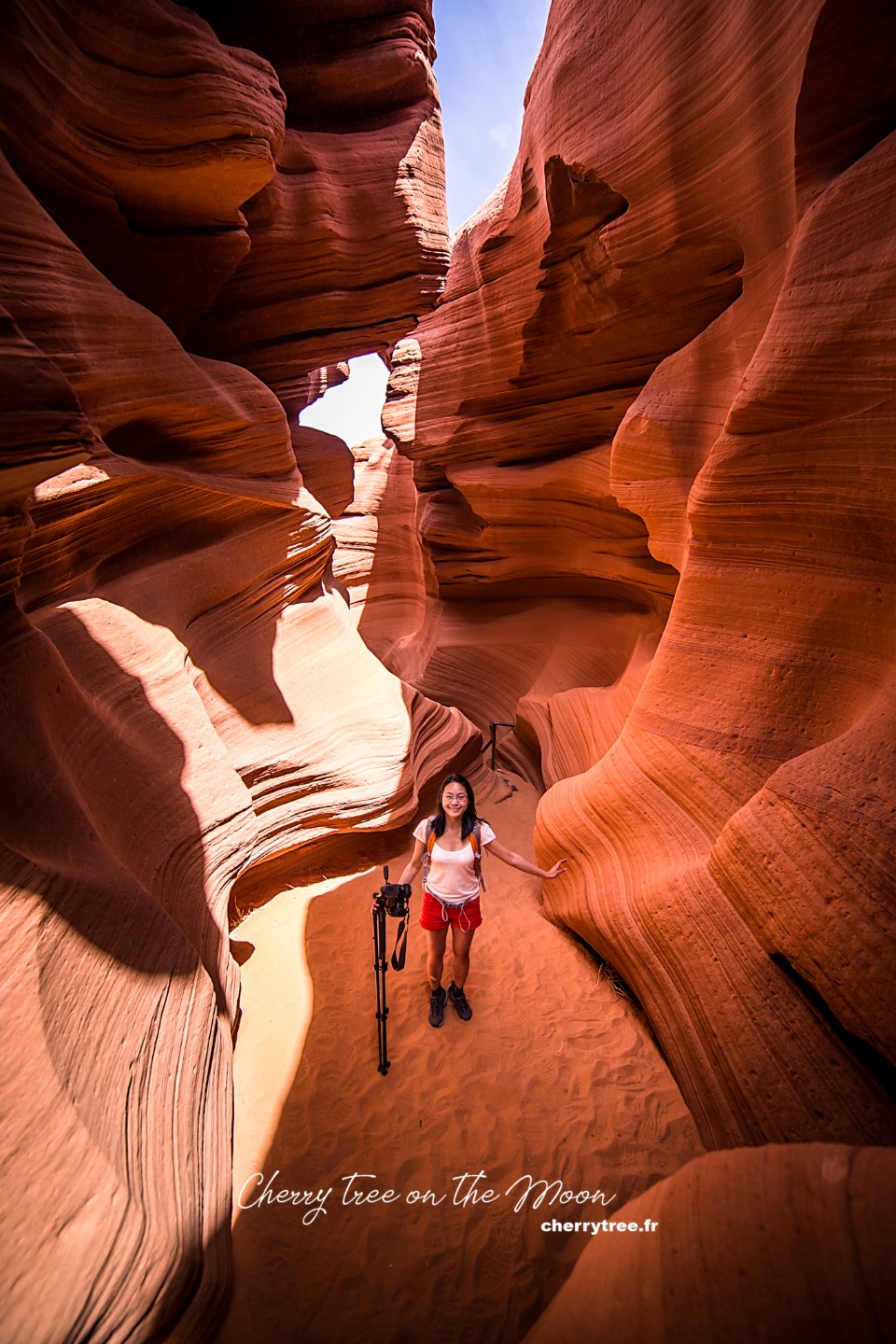
Although not as famous as the other US national parks, the desert around Page also has undeniable beauty. In the west of Page is the Vermilion Cliffs National Monument (NM), known for its stunning wave rock formations of The Wave. In the north is the wild Grand Staircase-Escalante National Monument, with countless strange stone pillars in a vast area. In the northeast is Lake Powell, one of the largest freshwater lakes in the United States, which is created by the Colorado River and Glen Canyon Dam. And closest to Page are Horseshoe Bend – the magical bend of the Colorado river, and Antelope Canyon – the two most magical, red-orange rock canyons in the Far West.
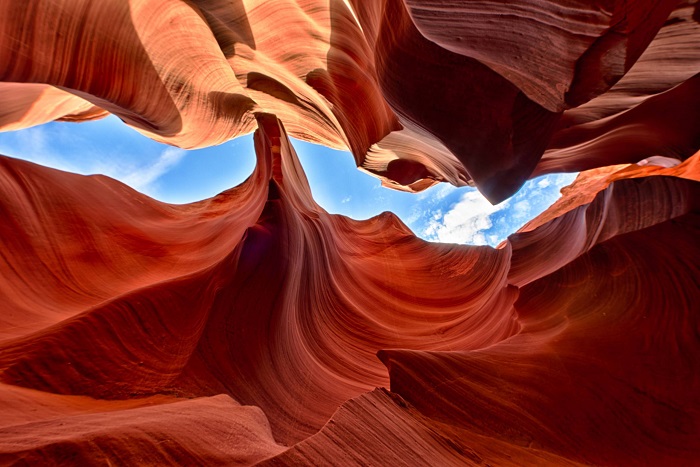
Antelope Canyon travel blog: Overview of Antelope Canyon
Antelope Canyon is so named because in winter, people often encounter antelopes roaming around this canyon. Antelope Canyon consists of two separate parts, Upper Antelope also known as Tsé bighánílíní in Navajo language, which means «the place where water runs through the (Slot Canyon) rocks». And Lower Antelope, also known as Hasdestwazi, or «Spiral Rock Arches». Both canyons are wonderful works of nature, proving that nature’s creativity far exceeds human imagination.
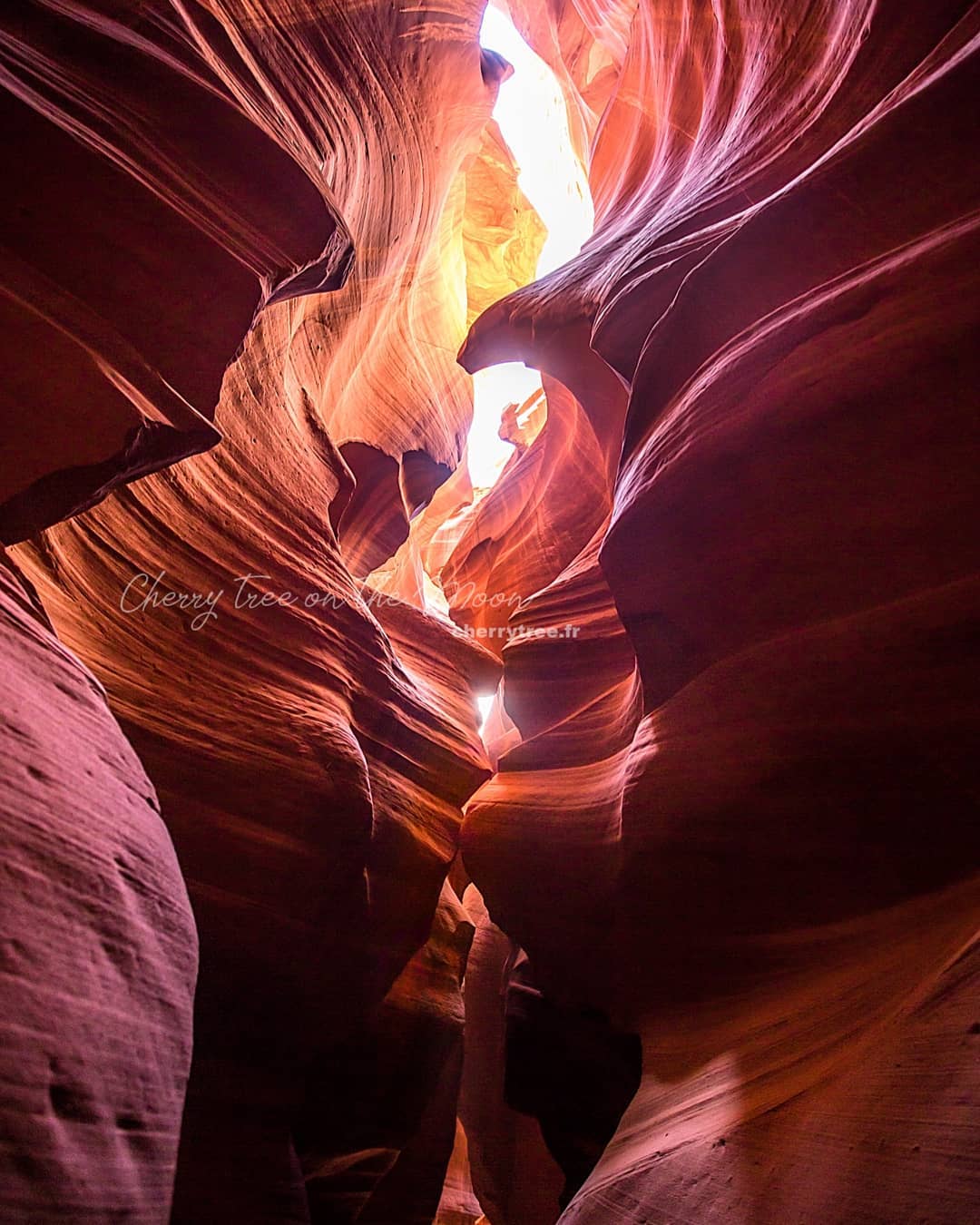
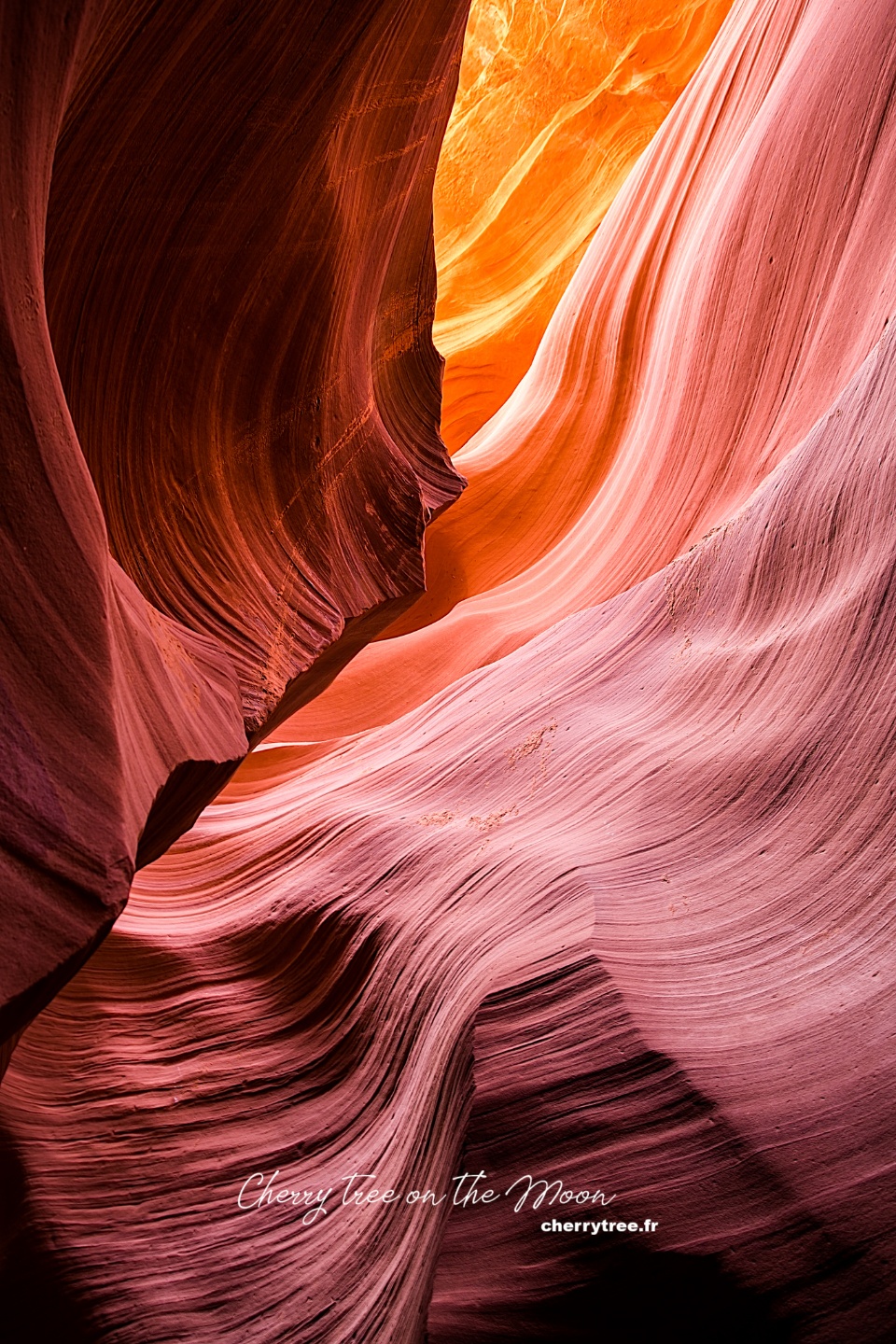
Antelope Canyon is formed from many overlapping layers of sandstone and limestone. Water from flash floods and wind carries tiny grains of sand, which, after millions of years, have eroded the cliffs into soft, seductive curves like the fluttering peach silk of an attractive dancer.
It will be lucky if you can admire Antelope Canyon around noon, when the sun is standing still. Rare rays of sunlight touch the sand floor in the valley, light spreads in space, reflecting on pink cliffs. Rock, sand and light work together to create a scene so magical you won’t believe your eyes.
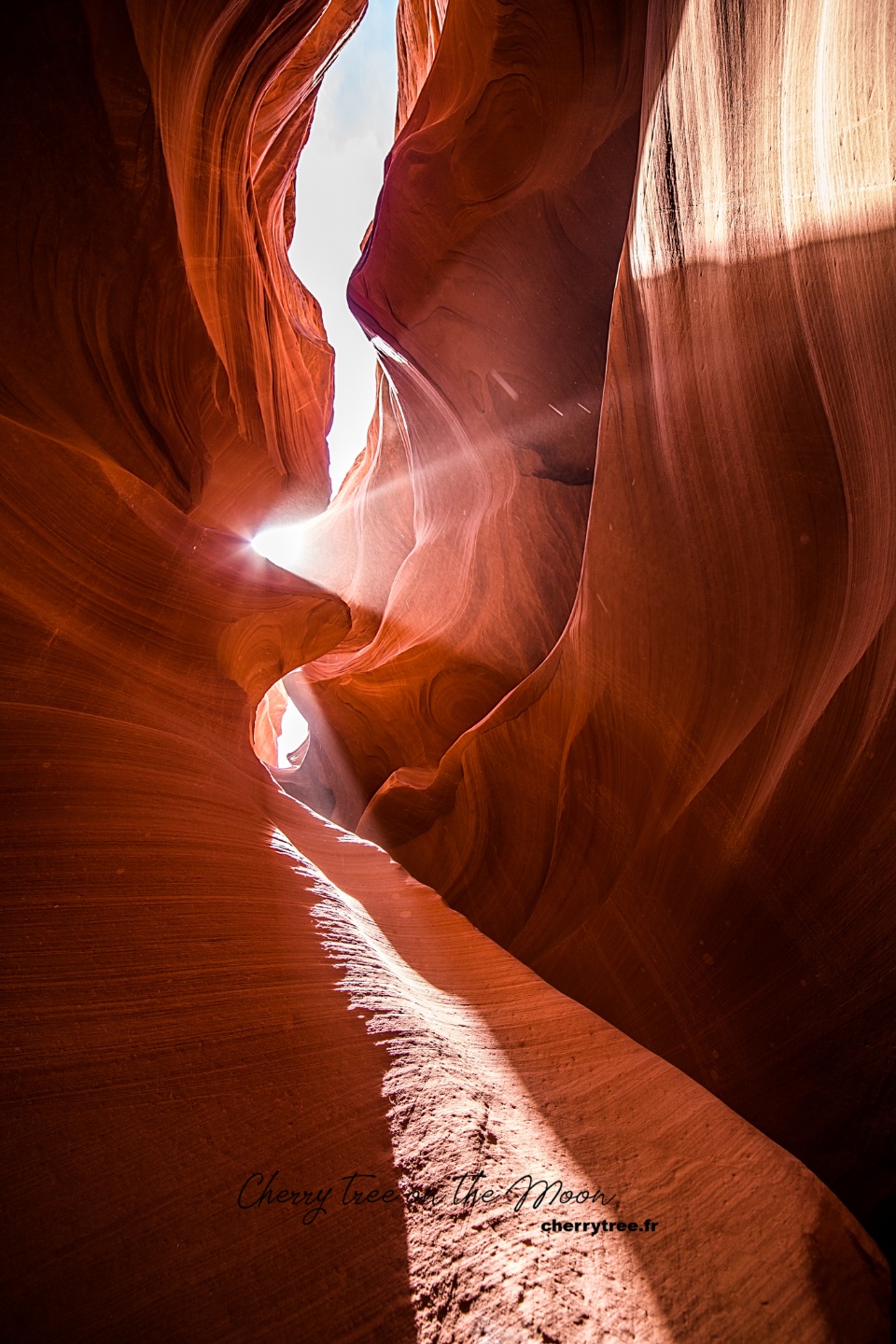
We could call Antelope Canyon the rising star of the American West. In the 80s of the last century, not many people knew about Antelope Canyon. Travelers who happen to drop by here will be free to capture the wonder for themselves for hours. Today is different, the mesmerizing beauty of the two canyons have made Antelope Canyon one of the most popular attractions in the Southwest. Tourists flock here more and more, filling the narrow gorge.
Unlike the national parks that are managed by the US government, Antelope Canyon is owned by the Navajo Indians and has been a Navajo Tribal Park since 1997. Therefore, the tours to these two canyons are always changing and the price of tickets keeps increasing exponentially, as does the length of the flow of people flocking here.
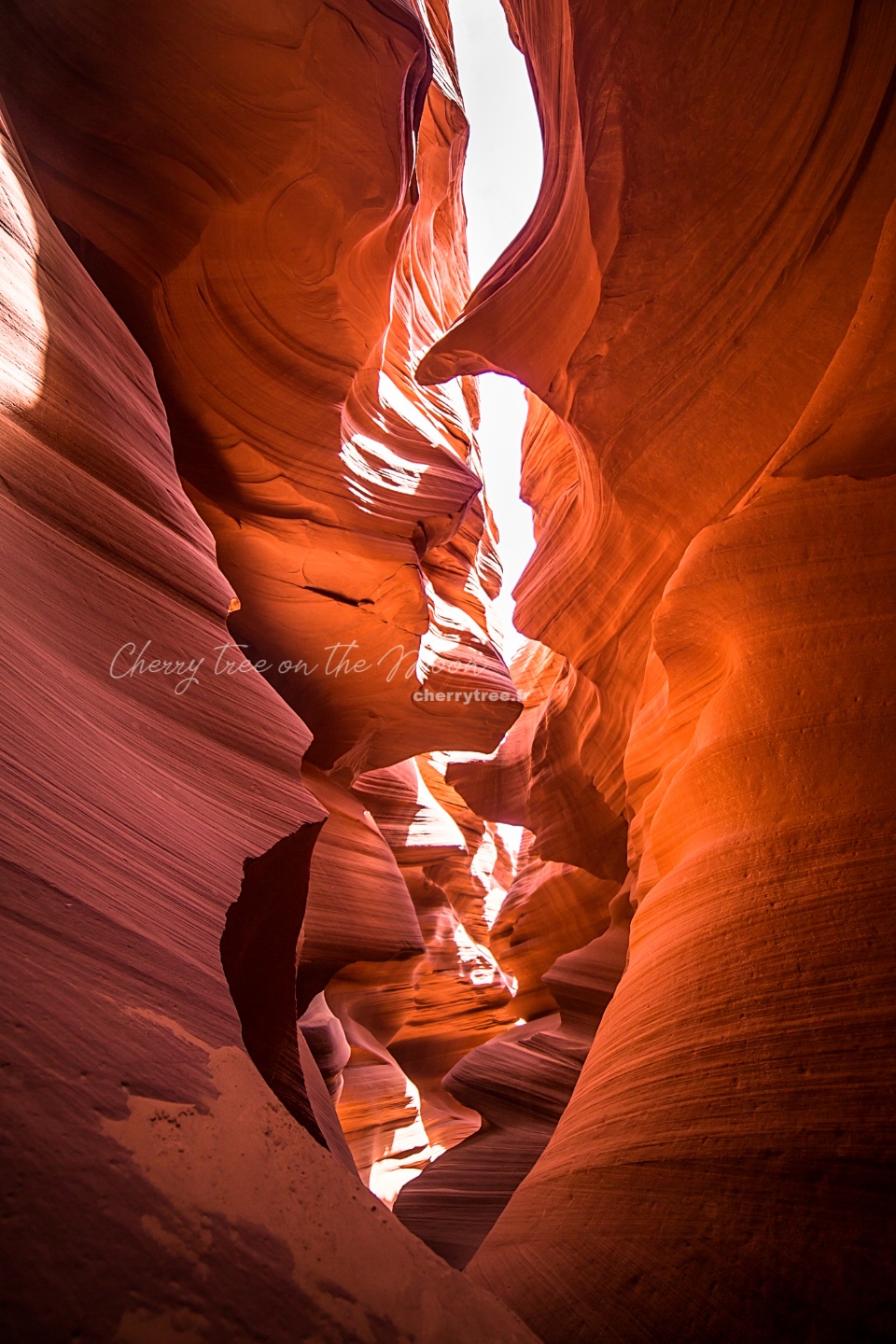
The discovery of Antelope Canyon
The Navajo people who were evicted from their land in Canada hundreds of years ago and then they traveled along the Rocky Mountains to the south, reaching the American state of Arizona in the early 19th century. They were sheltered by the treacherous Antelope Canyon.
They used wooden arrows to fend off all white gun attacks, and then proclaimed the creation of the Navajo Nation in 1868 on 71,000 square kilometers of land in the northeast of Arizona.
Antelope Canyon has been exploited for tourism since 1997. Today, when you come here, follow the iron ladders down deep underground, you will discover the upper – The Crack (Upper Antelope ) and the lower – The Corkscrew (Lower Antelope).
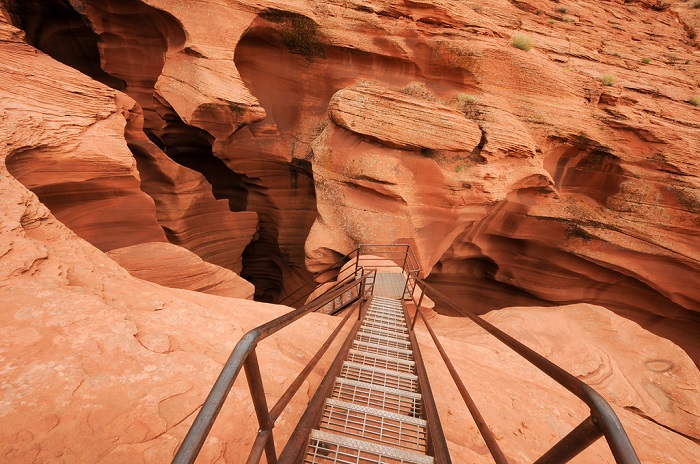
In the light streaming through the deep clefts, the twisted arches glow with the vibrant colors of the sandstone and the echo of the Navajo Aboriginal guide’s account of the seasons that flood the Antelope Canyon. Coming here you will have one of the most memorable experiences in your life!
Antelope Canyon blog: Upper Antelope Canyon
In the past, Upper Antelope was more famous than its Lower sister. The most famous sets of photos, which we often see on postcards with their brilliant red-orange colors, with the magical light shining from above, or the sparkling sand streams flowing from the cliffs, were taken in this gorge. Though only 200 meters long, Upper Antelope is truly an unrivaled wonder.
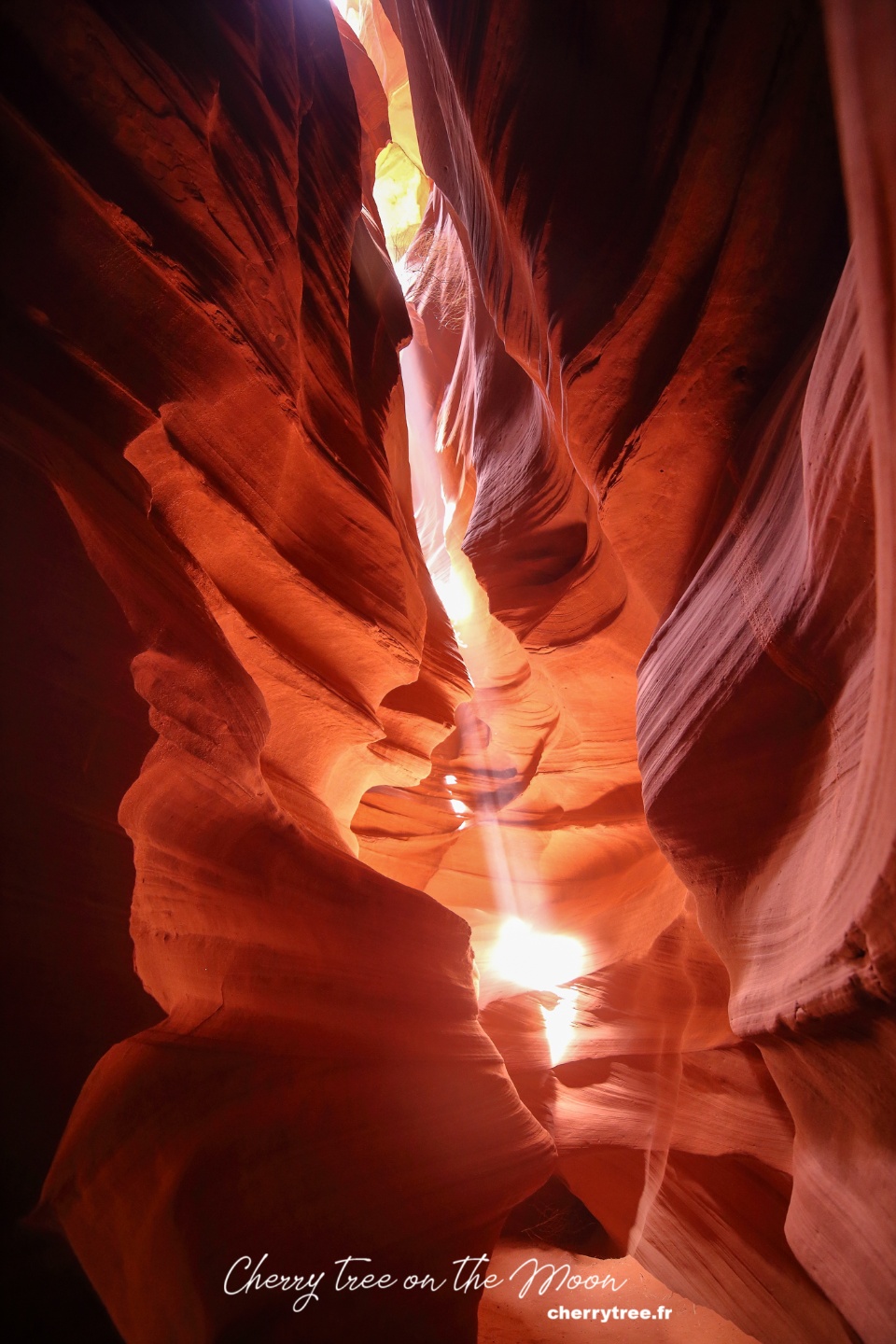
Photographing in Upper Antelope is both easy and difficult. Because, the classic shooting angles are quite easy to recognize, no need to find hard. But the Upper Canyon, which has an inverted V-shaped structure, wide below, constricts above, so it is dark and obscure. When the rare rays of sunlight at noon can touch the sand at the bottom of the ravine, that is also the time when tourists gather the most. So, even if you spend a lot of money to buy a photography tour, you only have a very short time frame to capture those frames.
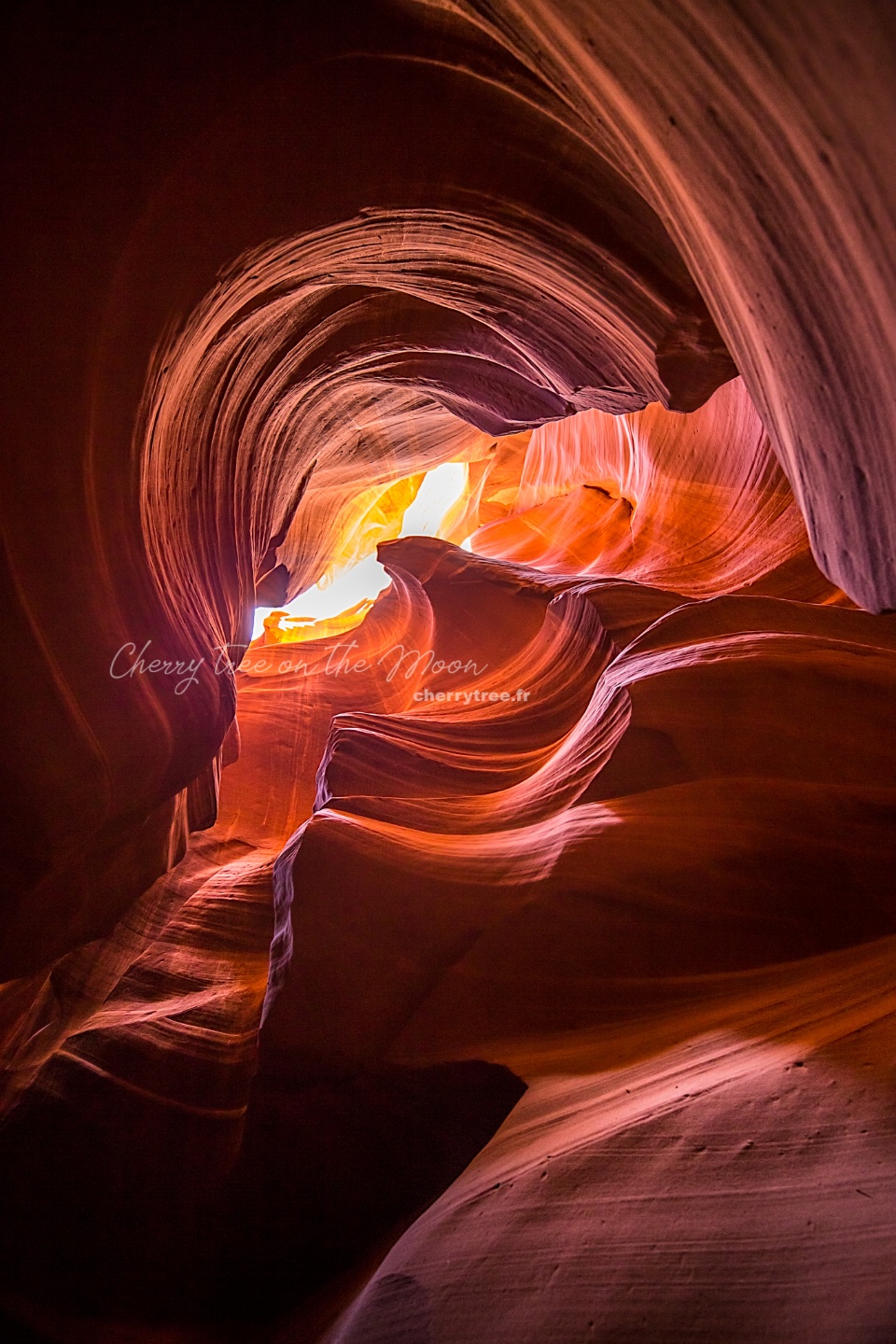
Upper Antelope Tour
A few years ago, when I came to Upper Antelope for the first time, tourists only needed to drive themselves to the gate and buy tickets on the spot, freely choosing the time of day to visit. Now (in 2022), to visit Upper Antelope Canyon, you will have to book a tour online long in advance, weeks to months in advance if you want to go during the golden hour to catch the beautiful rays (11am to 1pm, from April to October).
Upper Antelope Tour has 2 types: General Tour ($66 and $77 for prime time) and Photography Tour ($158), priced in 2022, excluding taxes and fees.
Photography tours cost twice as much but will get you going with a small group of only 8 people, get to go at the best time frame, have more time to take pictures and sightseeing, and most importantly, have staff to help you “do not allow other guests” to stand in the frame even for a moment. However, the photography tour also has stricter requirements for photography equipment and the age of the participants, so you should read carefully before booking the tour.
Two reputable companies doing tours at Upper Antelope are:
- Antelope Slot Canyon Tours, General tour only.
- Adventurous Antelope Canyon Tours (AACT), including General and Photography tours.
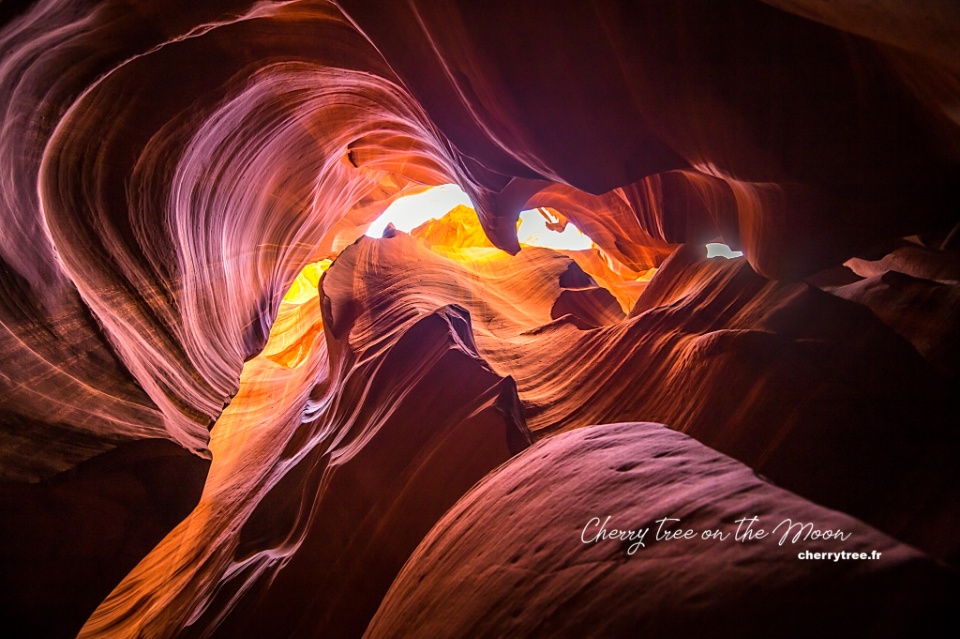
Lower Antelope Canyon
Not far from the Upper is the Lower Antelope Canyon. The reason for the name Lower is because this canyon is submerged below the ground, distinguishing it from the Upper which is above ground. Compared to the Upper, the Lower canyon has a V-shaped structure, wide at the top, much narrower at the bottom, but brighter and easier to photograph.
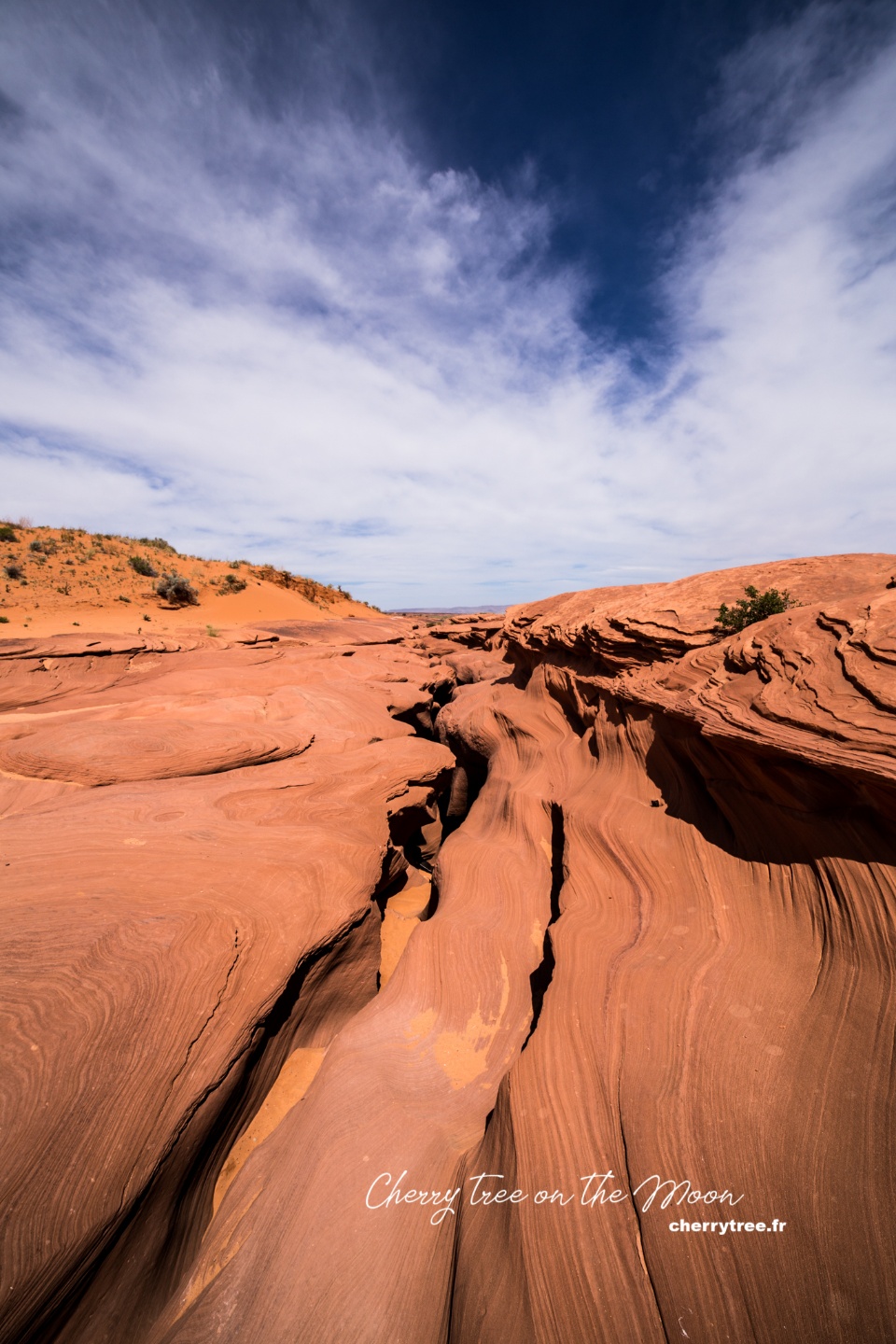
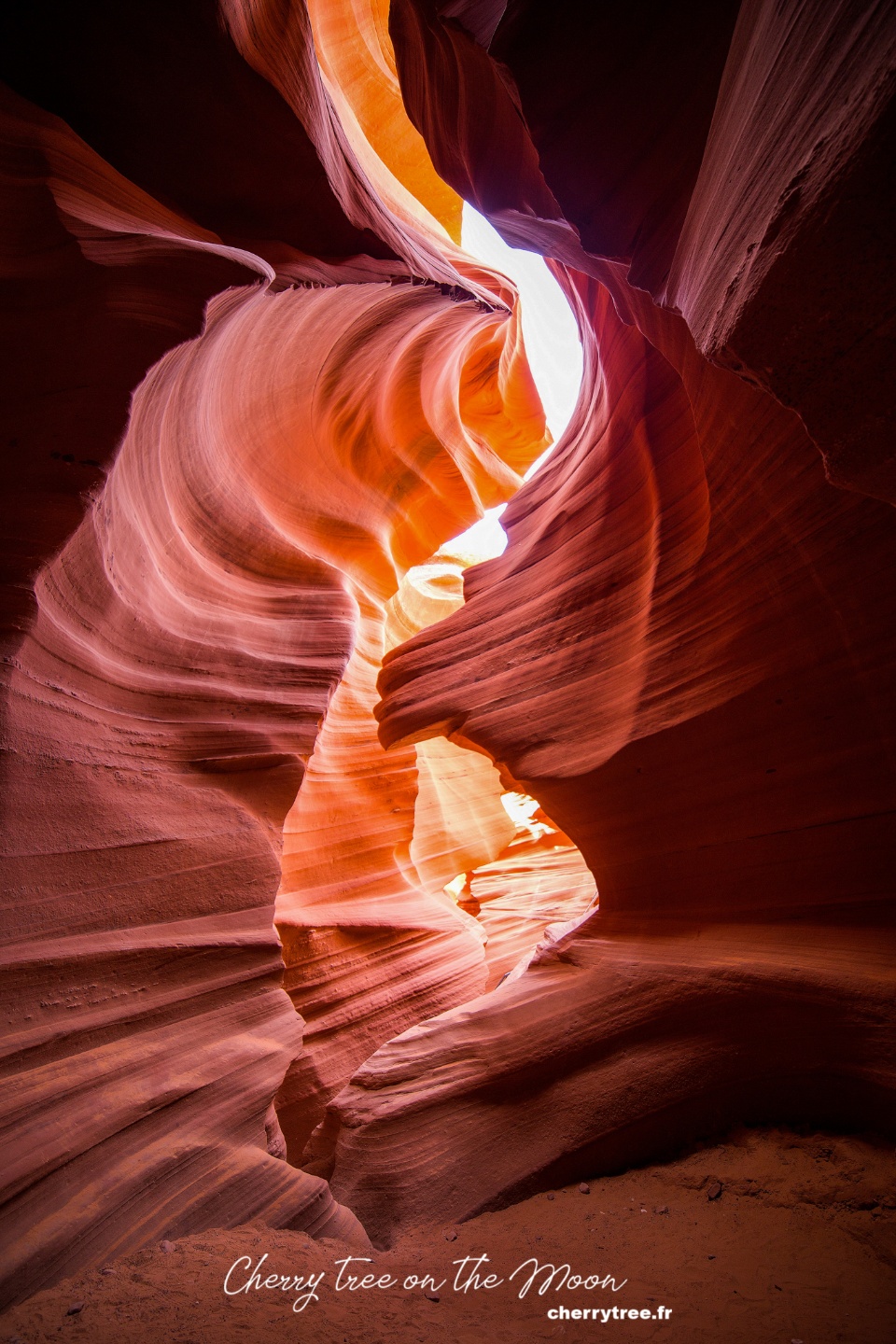
Once upon a time, when less people known, Lower Antelope was the smart choice for travellers who wanted to admire the mystery and charm of the red sandstone ravine, but at the same time avoid the crowds. But those days are gone, and the spiral rock arches of the Lower Antelope Canyon are now as attractive as the delicate sunbeams of the Upper. Tourists come to Lower more and more, but the canyon is too narrow, so since 2018, tour operators have completely abandoned photography tours to Lower Antelope.
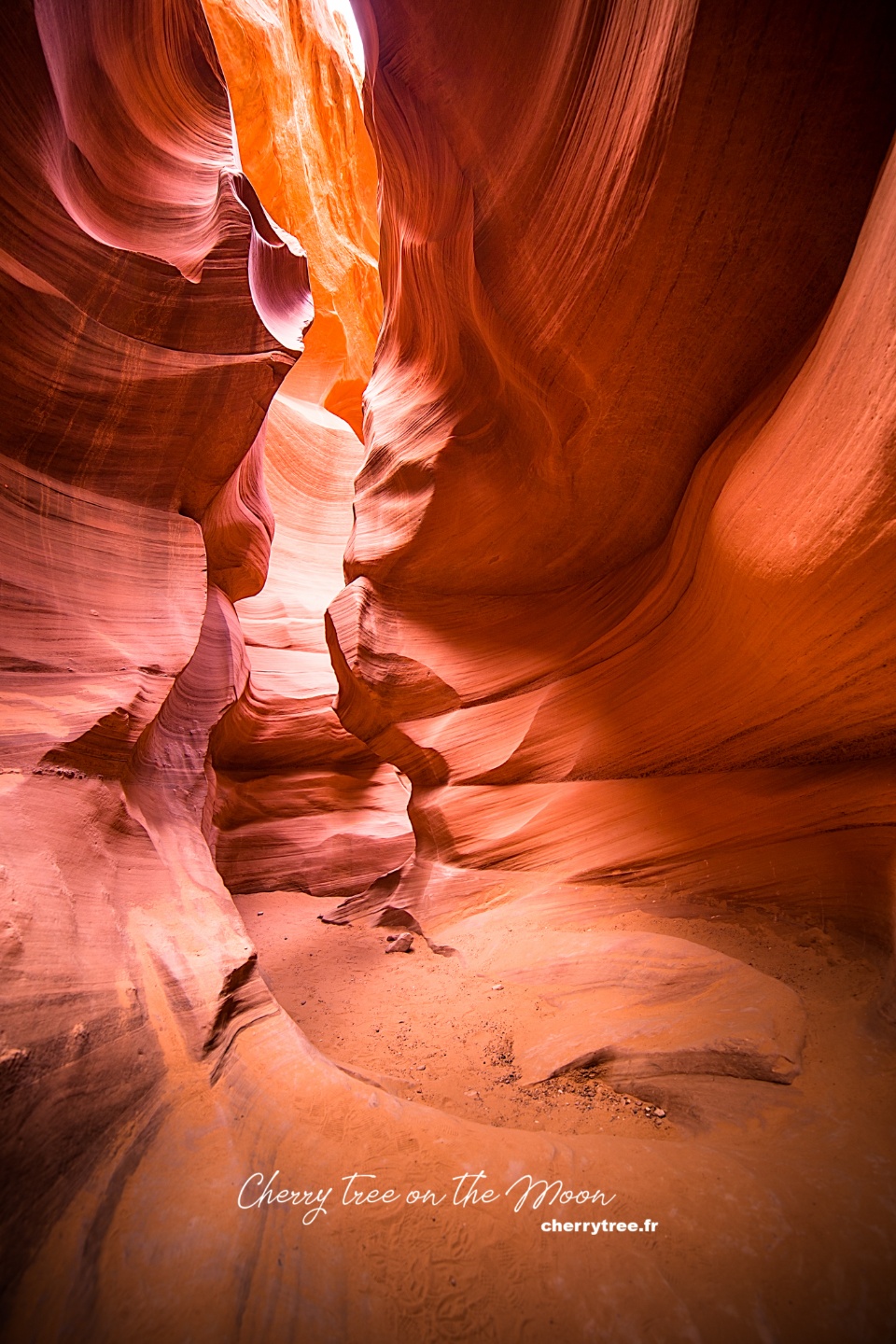
Lower Antelope Tour
Lower Antelope tour also has 2 types: General tour for group of 10 people ($40/adult, $20/child, free for children under 7 years old) and Deluxe tour, group of 4 people ($80/person), excluding taxes and fees.
I heard that the Deluxe tour, in addition to the smaller number of people but still having to queue with other tours, has no additional incentive, so you should consider when booking this tour.
Two companies that organize tours at the Lower Antelope Canyon are:
- Dixie Ellis’ Tours, General tour only.
- Ken’s Tours, both General tour and Deluxe tour.
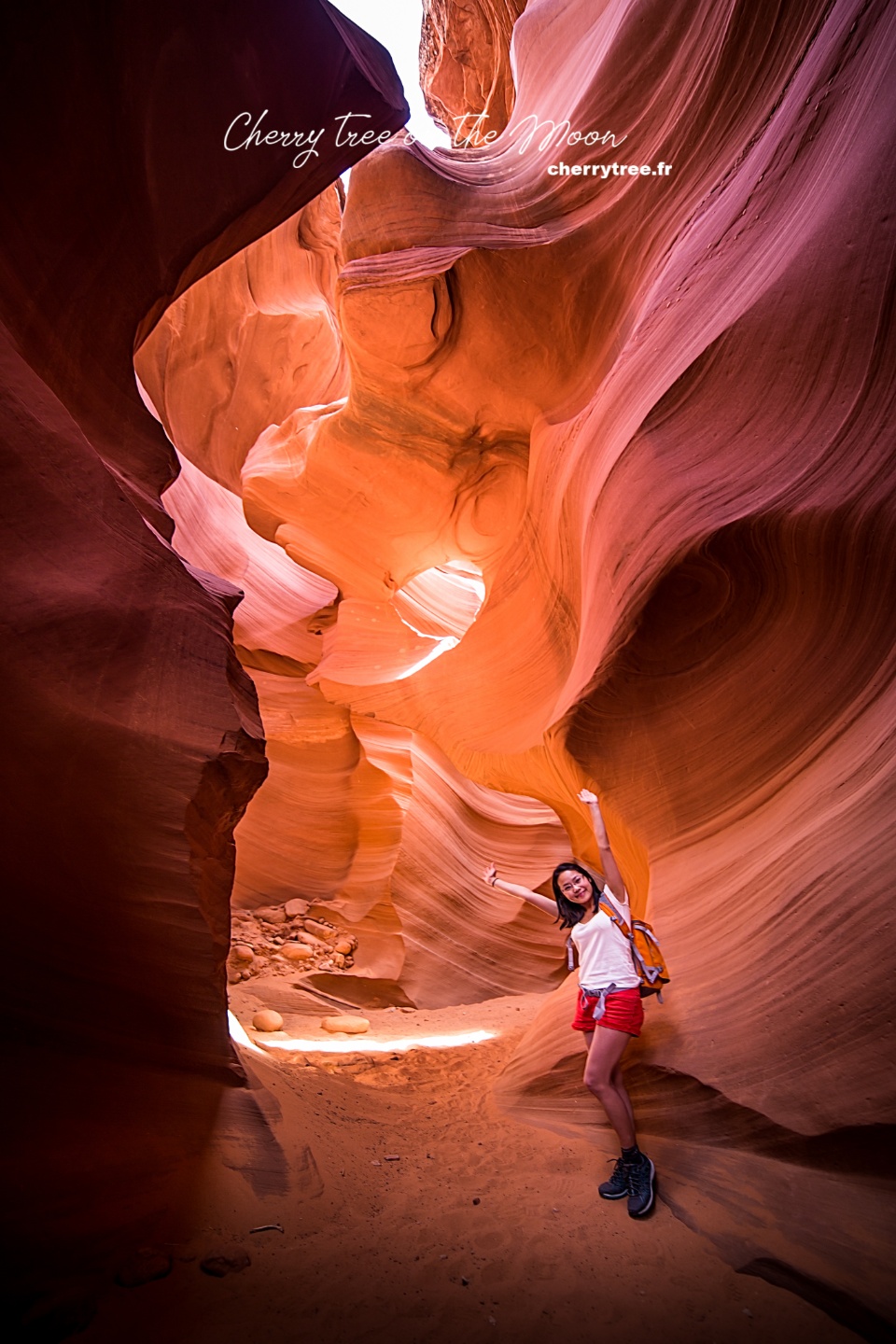
Things to know before going to Lower Antelope
You need to pay attention:
- Lower Antelope is very cramped, some sections that can only fit for 1 person pass through, so you need to consider your health and the space you need to move.
- Do not bring sticks, photography sticks, bags and backpacks.
- During peak season, you may have to wait for a long time in the desert heat, so bring a hat, scarf and drinking water.
- Absolutely do not access Lower Antelope by yourself without a local guide, because this is a slot canyon, the water rises extremely quickly, it is very dangerous if it rains within a radius of 15 km around it.
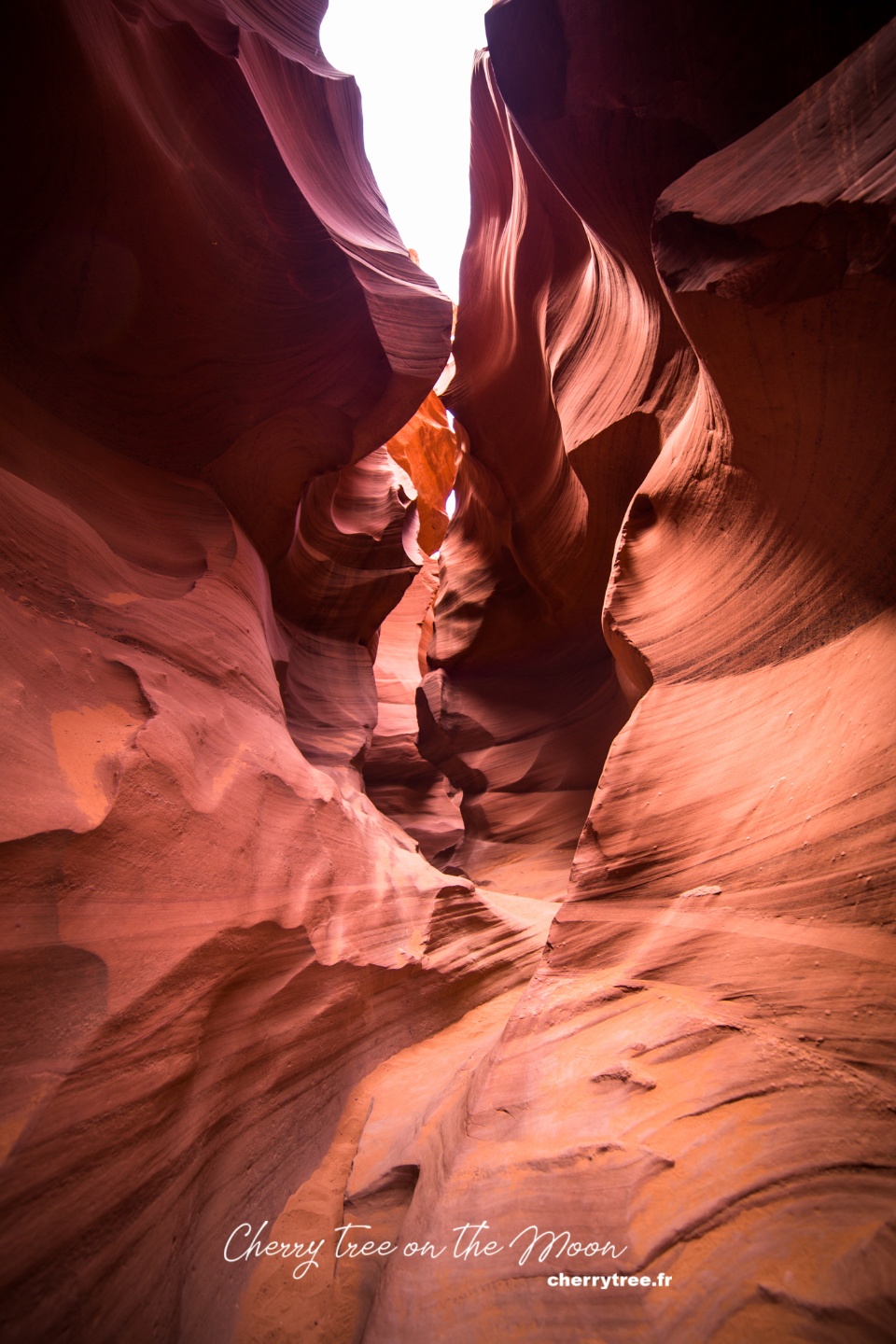
Upper Antelope vs Lower Antelope: Which one is better Upper or Lower antelope if you can only choose 1 out of 2?
Although not far from each other, with similar structures, but Lower and Upper Antelope bring two distinct beauties, adorning the shades and shapes that mother nature has bestowed. Of course, I know that not everyone has enough time and money to go to both canyons, especially with the price of tours increasing day by day. Therefore, if you want to choose 1 out of 2, the answer depends a lot on your requirements and circumstances. I will summarize the highlights of each canyon so you can see which one is more suitable.
Lower Antelope Canyon
- Narrow and bumpy terrain, difficult to move but more interesting for those who like to climb and explore.
- Children are allowed to visit.
- The canyon bed is tight, so it’s easy to feel crowded.
- More tours, so you should have to queue.
- There are rays of light shining down on the canyon, although it is not as magical as in the Upper.
- Easier to take pictures due to the V-shaped structure that receives a lot of light, which can take quite a good photo only with a phone.
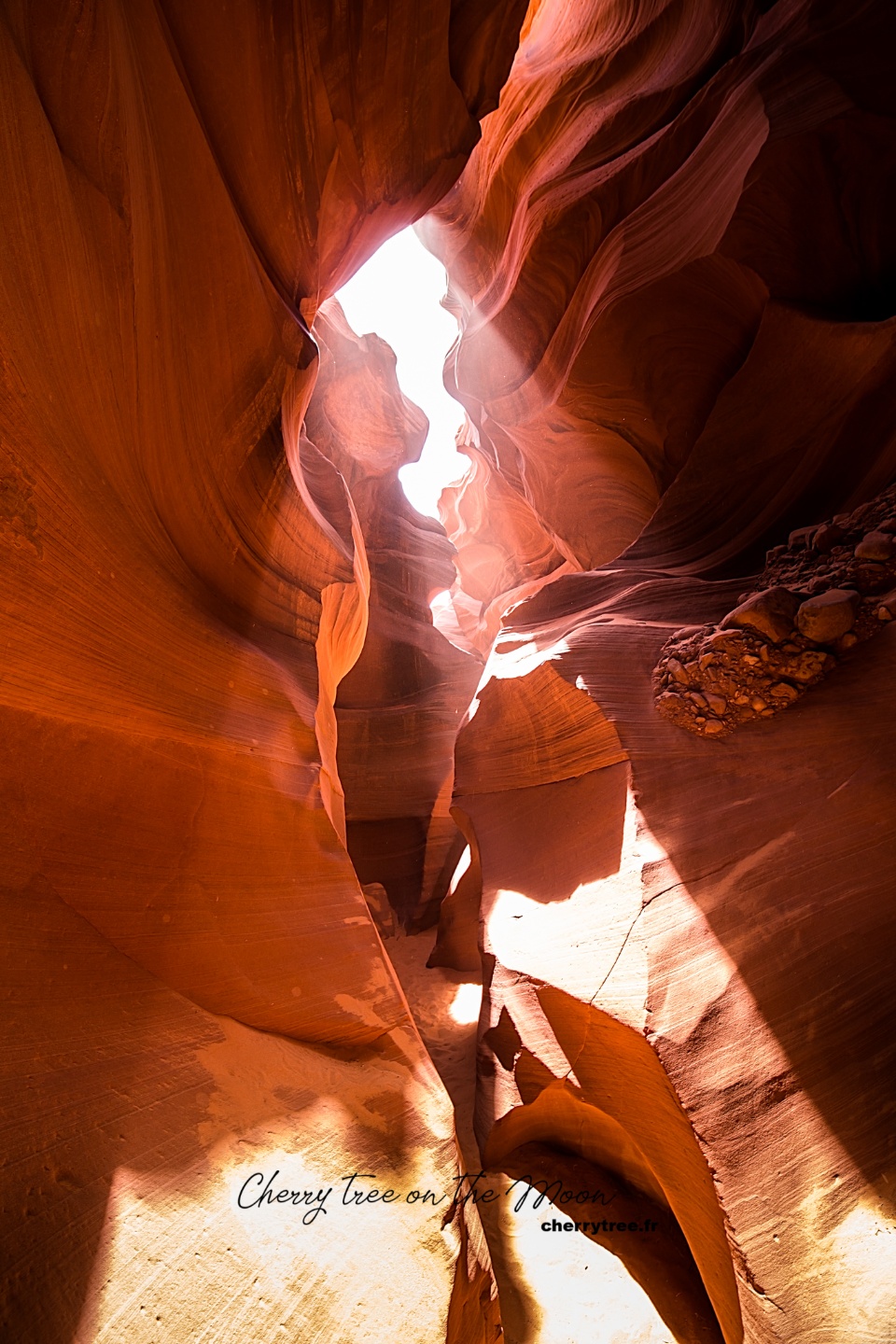
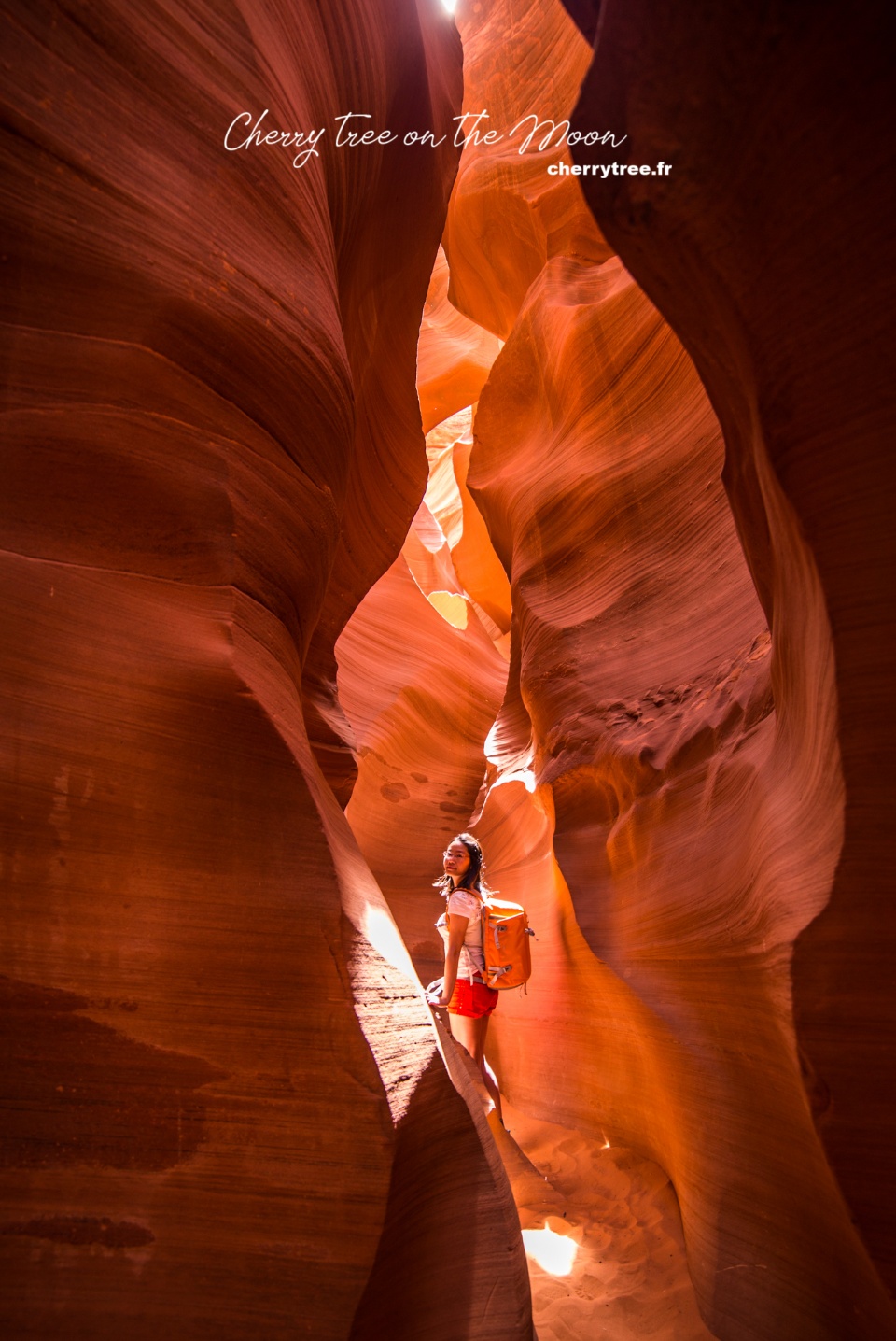
Upper Antelope Canyon
- Inverted V-shaped structure, wide and flat underneath, so it’s easy to move.
- Children under 7 years old are not allowed for the General tour and 13 years old for the Photography tour.
- There is sunshine at noon and magical sand lines falling.
- The space is very dark so it’s hard to take pictures, it’s hard to take pictures with a phone.
- In 2022, only the Upper offers a Photography tour but the price is high, must be booked many weeks or even months in advance.
Personally, I think Lower Antelope is more suitable for popular travelers, families with young children. The Upper is suitable for those who have a passion for landscape photography and with a thick pocket.
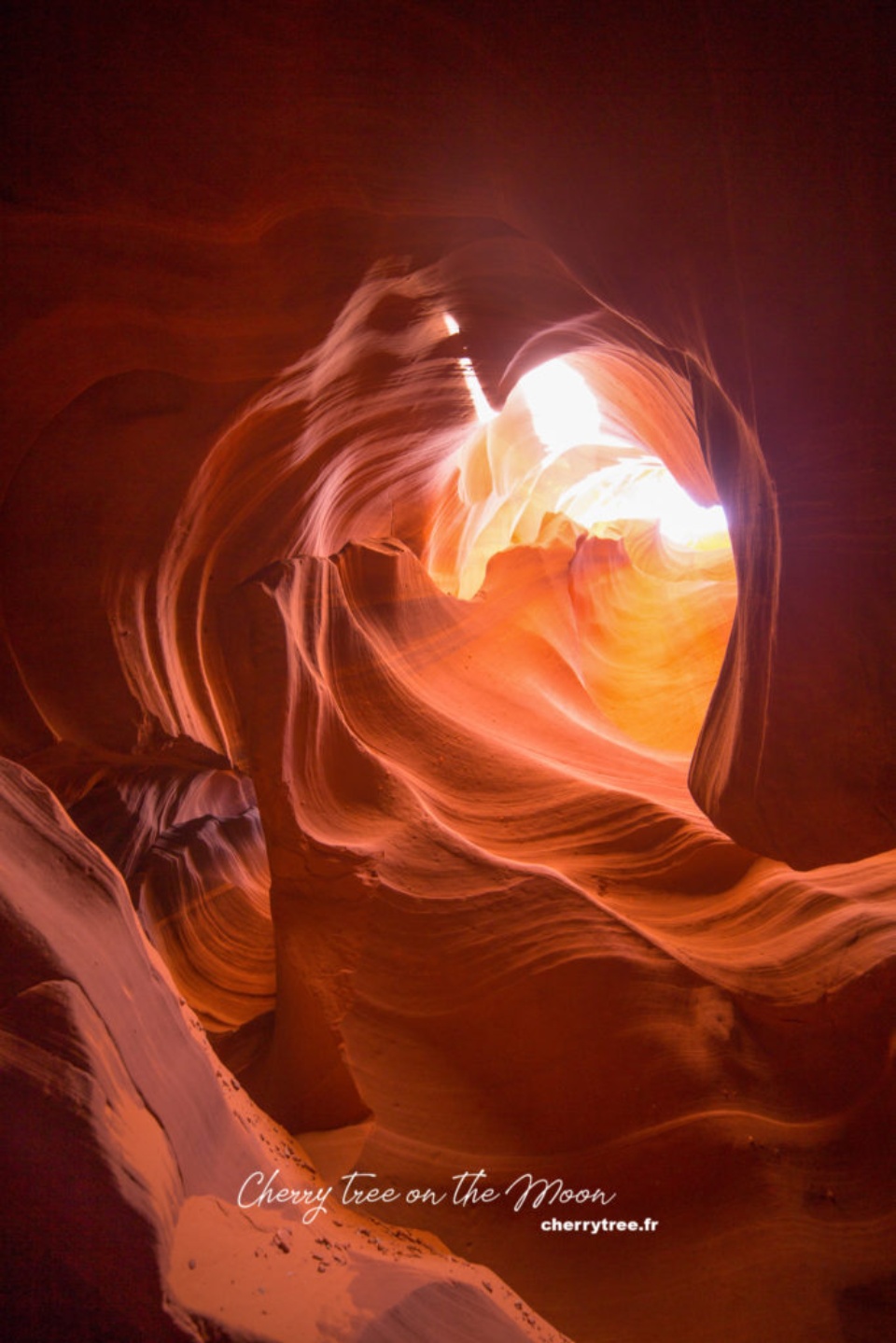
Antelope Canyon travel guide: Antelope Canyon photography tips & best camera settings for Antelope Canyon
Choose a time
The colors in the two canyons are always beautiful and constantly changing. However, the golden hour (prime time) for Upper Antelope is from 11am to 1pm, from April to October. At this time, small rays of sunlight will shine down on the canyon bed, creating a very magical scene.
Lower Antelope also has a ray of sunshine, but not as special as in the Upper. This gorge expands to the sky, so the time frame for sunlight is also much longer. Due to the sudden increase in visitors to the Lower in recent years, you may have to wait in long lines in the hot sun for your turn, so you should avoid the summer months.
In my opinion, from April, May, September, and October are good times to go to Antelope Canyon.
Capturing photos in RAW format
All of my photos are taken in Raw files. Especially in Antelope Canyon, in low light, and with a lot of difference between the light and dark spaces, the Raw file will be very useful in post-production. Try it and you will immediately see the difference.
Tripod or not tripod?
You can only use a tripod if you join a photography tour. Otherwise, you will have to go with a dense flow of people. Inside Antelope Canyon is extremely narrow, people are jostling and pushing, without a guide, you won’t have time to mount a tripod and take pictures.
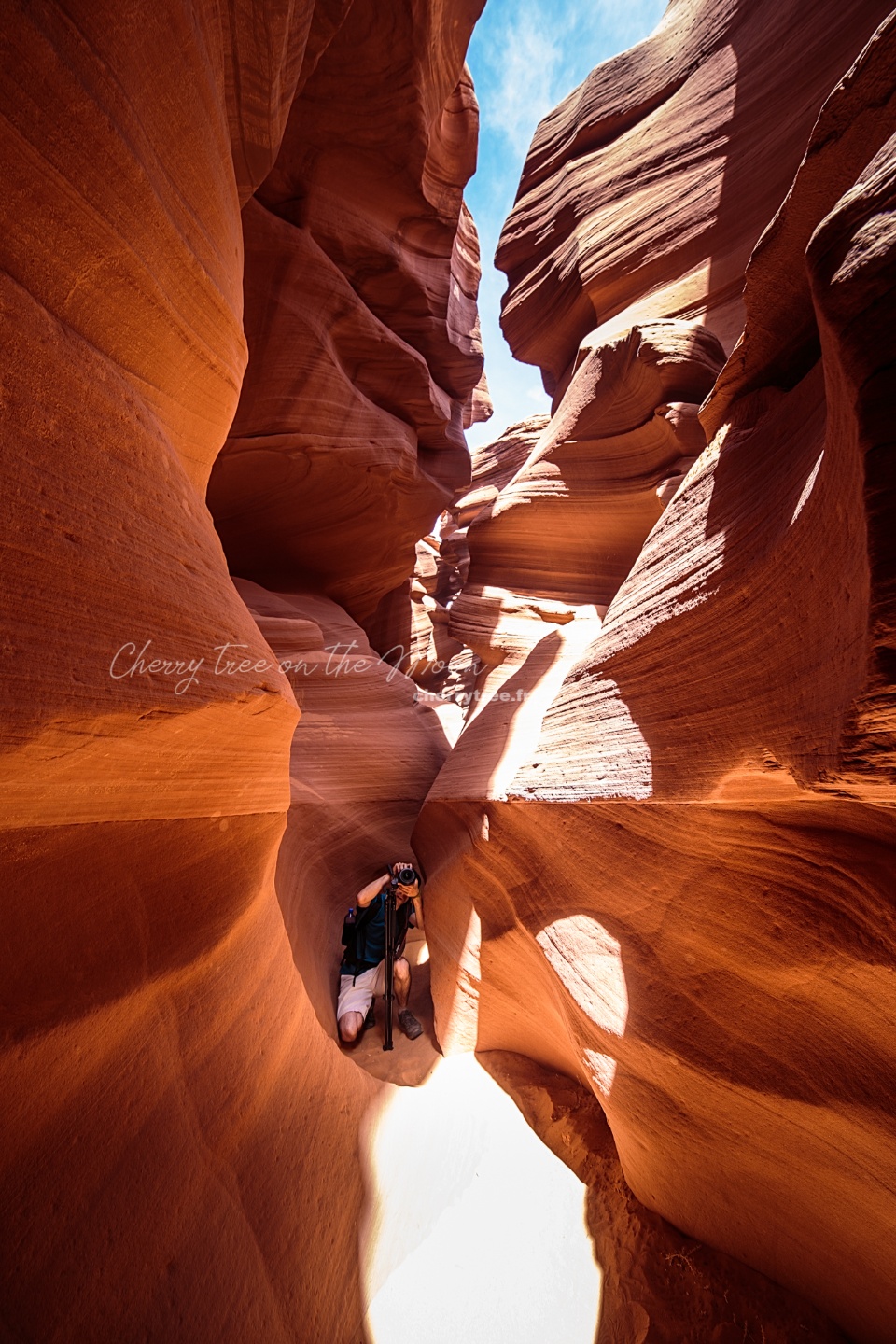
Choose lens
The inside of the two gorges is very tight, with little room to back down. So with interchangeable-lens cameras, you should choose a wide-angle to super-wide lens that ranges from 14 to 35 mm.
All pictures in my post were taken with 2 lenses: 14mm f/4 of Samyang and 17-40mm f/4 of Canon on 2 fullframe cameras.
Adjust ISO and Aperture
If you have a tripod, you can close the aperture to f/8, low ISO around 100-200 ISO, automatic speed.
If you don’t have a tripod, you should open the aperture in maximum (f/2.8, f/4 depending on the lens), shutter speed between 1/30 s and 1/40 s so that the image is not blurred, automatic ISO mode.
Manual or auto focus?
Antelope Canyon, especially Upper Canyon, is so dark that the camera often fails to focus in that light condition. So if you find the camera difficult to focus automatically, you should completely switch the camera/lens to manual focus mode.
Focus on Hyperfocal
Switch to manual focus mode, now where to focus? In order for the image not to be out of focus much, you should focus on the hyperfocal. For example, 18mm lens mounted on a fullframe camera, open f/2.8, hyperfocal is located at about 3.84 m.
It sounds complicated, but it’s actually very simple with a few steps:
- Before you start shooting, you determine in advance the focal length you will use, for example 18mm, 24mm.
- Determine the aperture of the lens you intend to shoot, for example f/2.8, f/4, f/8…
- Look up in the corresponding table the hyperfocal distance.
- Switch camera and lens to manual focus mode.
- Manually adjust the focus point to the hyperfocal.
- Just adjust like that, taking photos during the whole visit, no change.
I have pre-calculated a few corresponding examples between these 3 parameters here (updating).
If you don’t know what a hyperfocal is and want to learn more about it, you can check it out here.
Equipment maintenance
The inside of Antelope Canyon is very dusty. Fine sand floats in the air. So you should wrap the device in a plastic bag or rain cover to prevent sand from entering the small openings. In particular, absolutely do not change the lens inside the canyon because you could damage both the camera and the lens.
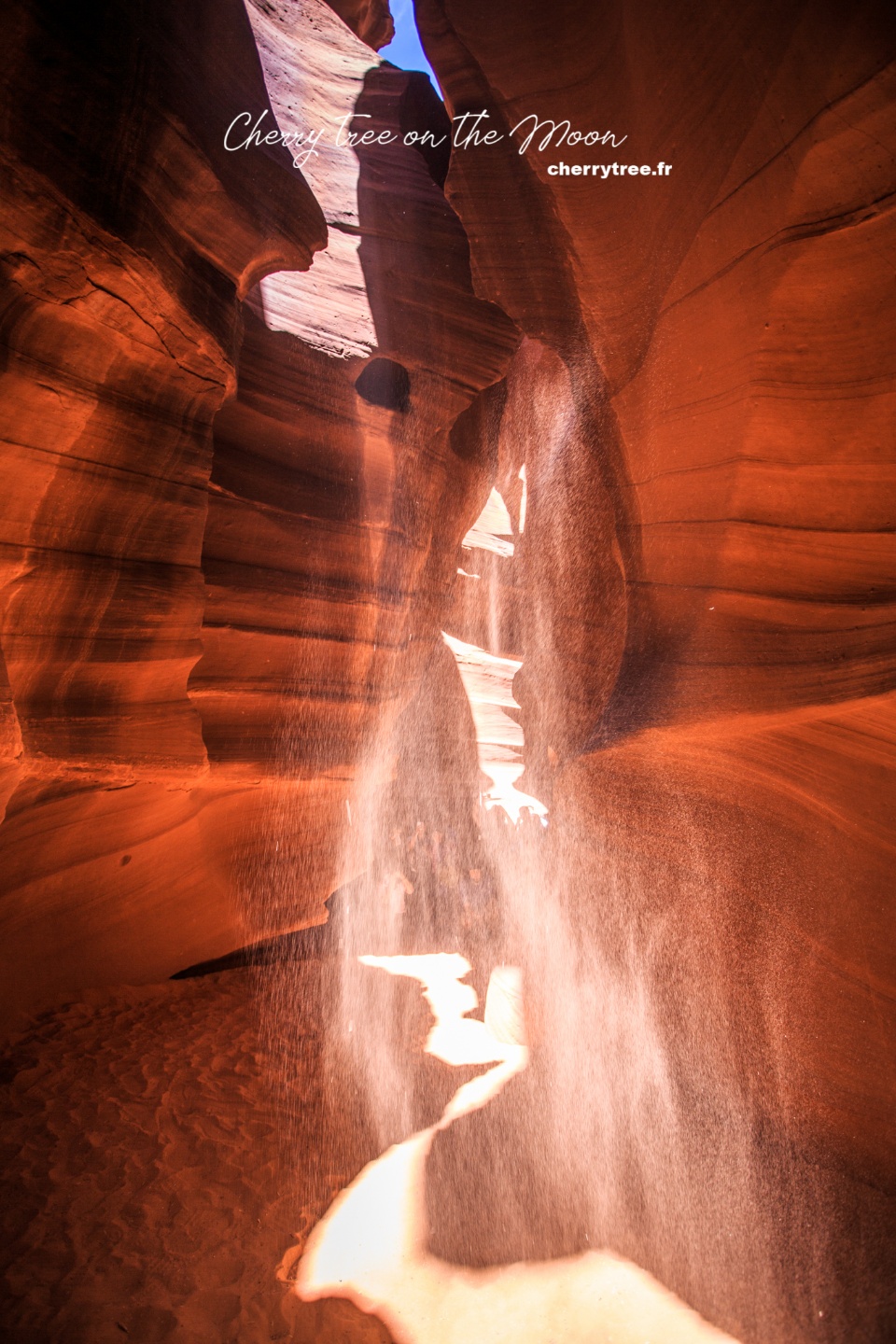
What to do near Antelope Canyon and Page ?
The area around Page city is full of interesting places to visit:
- Vermilion Cliffs National Monument (NM), known through the image of the beautiful wave flowing rock shapes of The Wave.
- Wild and vast Grand Starcase-Escalante NM.
- Lake Powell, one of the largest freshwater lakes in the United States, created from the Colorado River and Glen Canyon Dam, with a multitude of water activities.
- Stud Horse Point, oddly shaped hoodoos in Bryce Canyon.
- Horseshoe Bend, the most beautiful bend of the Colorado River.
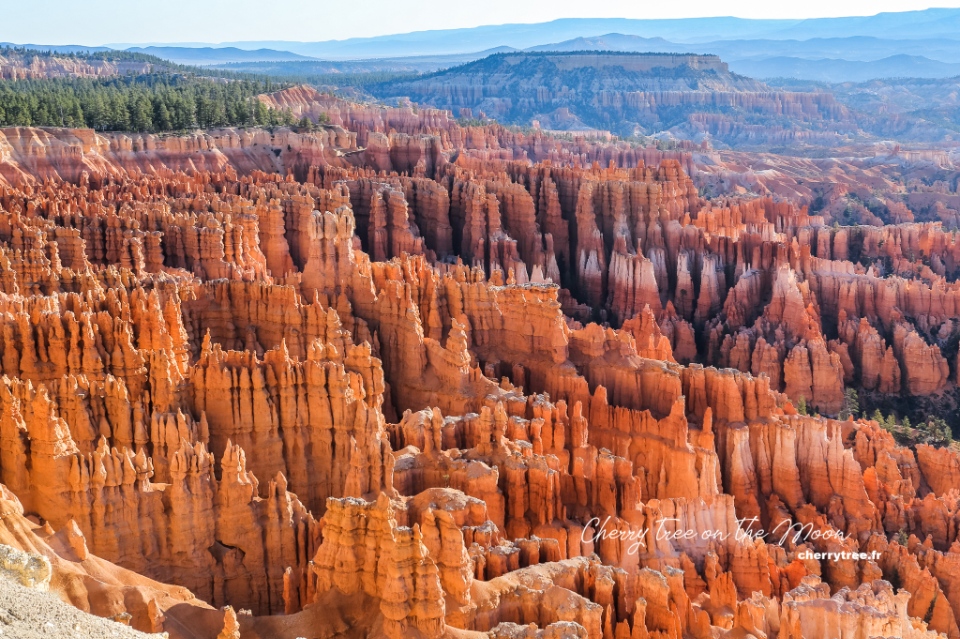

Read more Bryce Canyon itinerary — How to visit Bryce Canyon in one day? And Grand Circle USA blog — The guide & suggested perfect Grand Circle road trip itinerary for 3 weeks.































![10 best airports in Asia in 2016 [RANKED] kuala-lumpur-international-airport-best airports in asia in 2016 by skytrax ratings](https://livingnomads.com/wp-content/uploads/2016/08/29/kuala-lumpur-international-airport-best-airports-in-asia-in-2016-by-skytrax-ratings-218x150.jpg)











